If you had asked me what I expected Brazilian schools to be like before I left on this trip, I do not know what I would have told you. In terms of size, I think I was expecting the schools to be much bigger than what I’m used to in Calagry, since Brazil has a much higher population than Canada. I also expected the schools to have fewer resorces than we do in the Canadian schools I’ve visited. Other than that, I had no set expectations for what I would experience here.
Over the past month I have had the oportunity to visit quite a few different schools all around Goiânia, both public and private, and primary and secondary levels. While these schools operate very similarily to schools in Canada, there are quite a few major differences I have noticed. The first of them being the physical layout of the schools themselves. While Canadian schools are restricted to exclusively indoor classroom settings, all of the schools here in Goiânia that I have visited have had amazing, open floorplan that allows students to take advantage of the warm, sunny weather. Not only does this let in lots of natural sunglight into the classrooms, it also makes it possible for schools to be filled with big, beautiful, tropical plants. Students are able to interact in these courtyard areas between classes and during breaks, as well as find quiet places to focus on their individual studies.
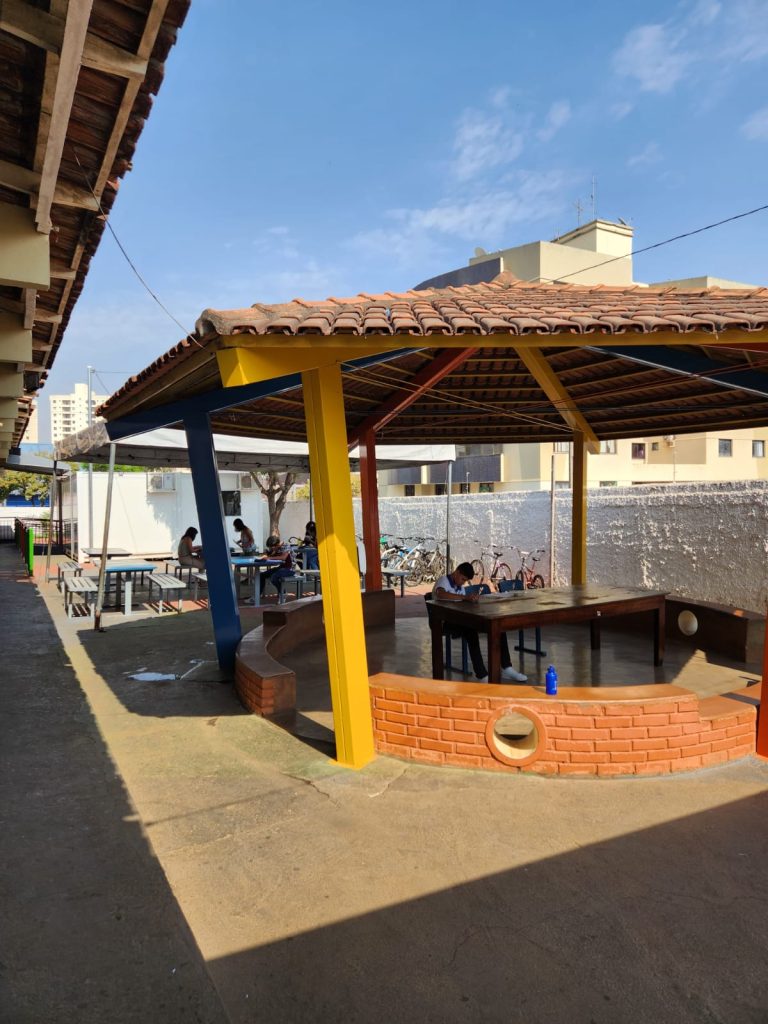
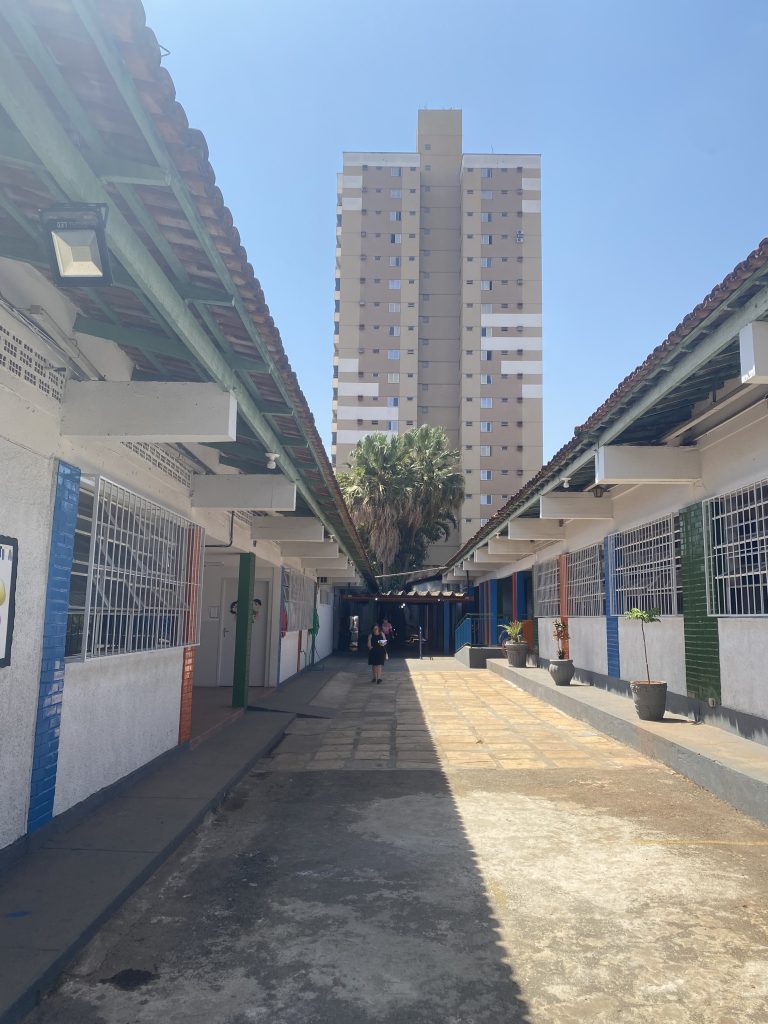
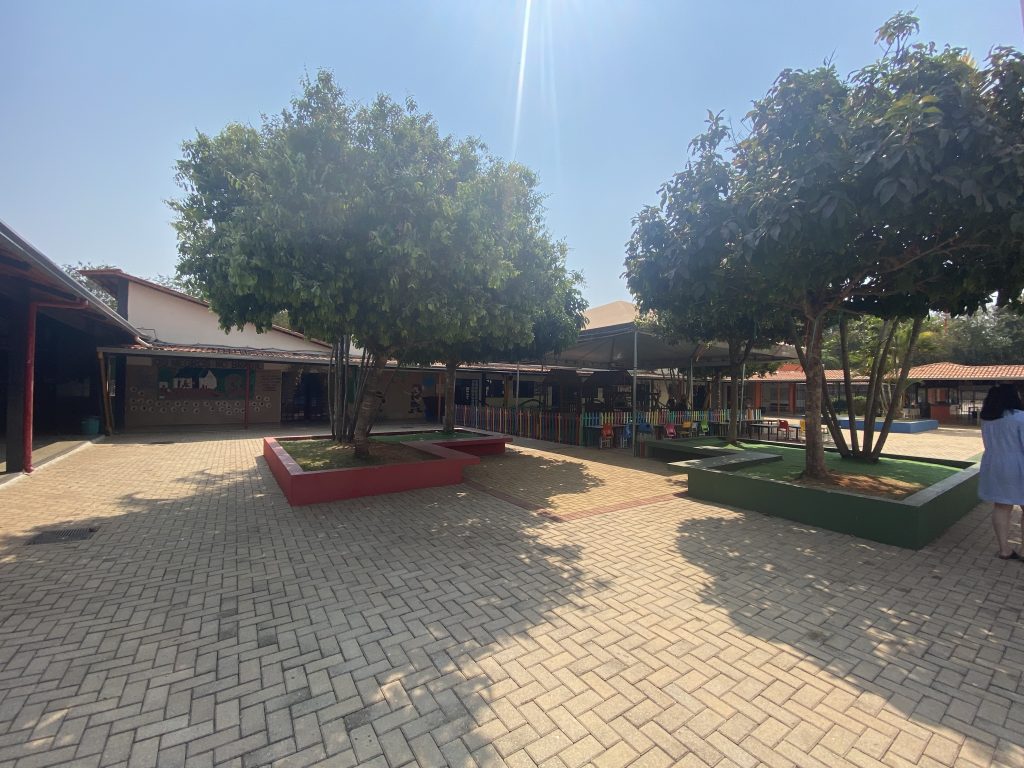
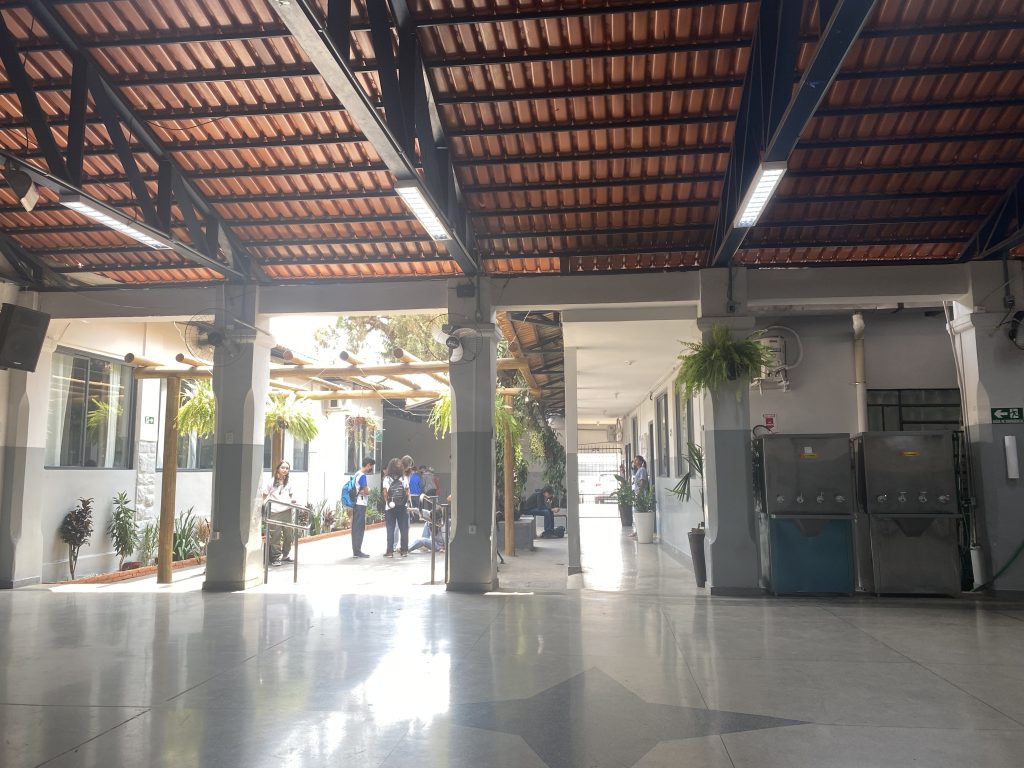
I was wrong in my expexation that the schools here would be bigger than Canadian schools. Instead of much higher populations of students, the schools here are quite small. This means that there are lots of schools in the city, and teachers are able to form much closer relationships with their students since they are in closer contact more frequently. I was, however, correct about my assumption that schools would have fewer resources. Many of the schools do have libraries and computer labs, but they are not used nearly as often as they are in Canada, and contain considerably less books and technology for students to access. Science labs, additonally, have very few tools that students are able to use to assist their learning. One school we visited in particular, commented on the fact that they had two microscopes, but they were not used ofted due to the risk of breaking them.
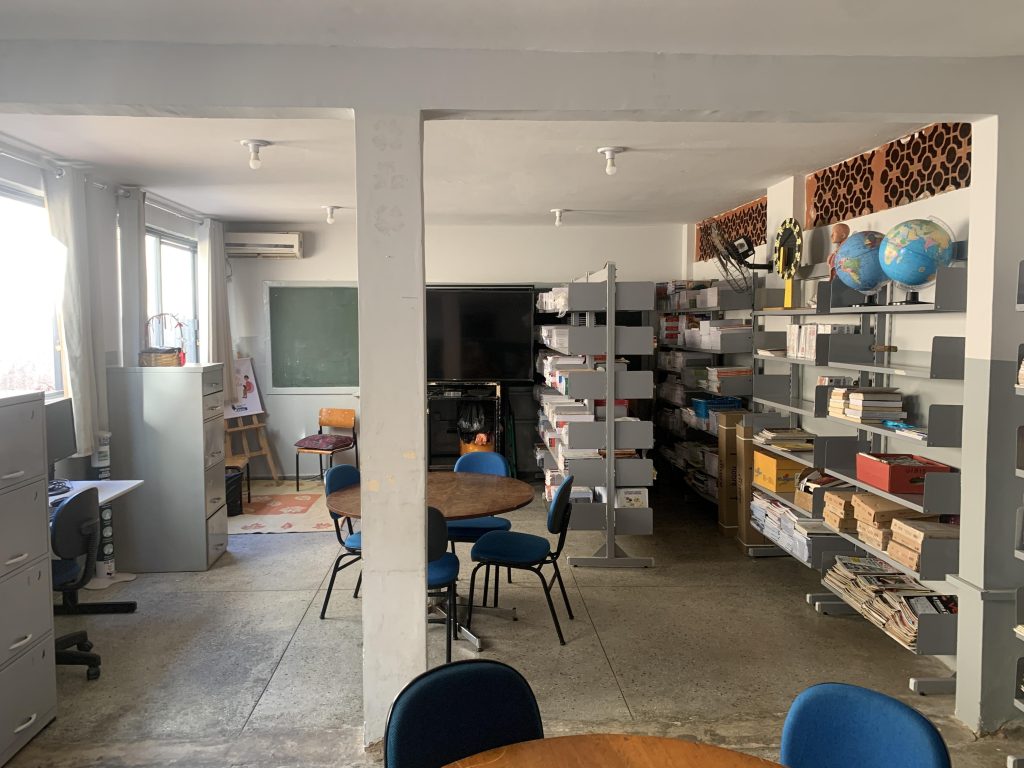
The classrooms themselves do not have acess to much technology either. A typical classroom has desks, a whiteboard, and maybe a TV in the corner for teachers to show powerpoints and videos. A benefit of such simple classrooms is how easily students are able to alter it’s appearance to suit their needs. Frequently, desks are rearranged into cirlces in order to facilitate more genuine conversations, or pulled to the back of classrooms to make room for presentations. This is seen in Canadian classrooms too, but is much easier and more efficeiently done here without excess classroom furniture and clutter. In one school we observed, every classroom was decorated by the students to represent a different country during a nation fair. The students were responsible for decorating the walls with posters they had created, as well as to provide a cultural dish to share with their classmates.
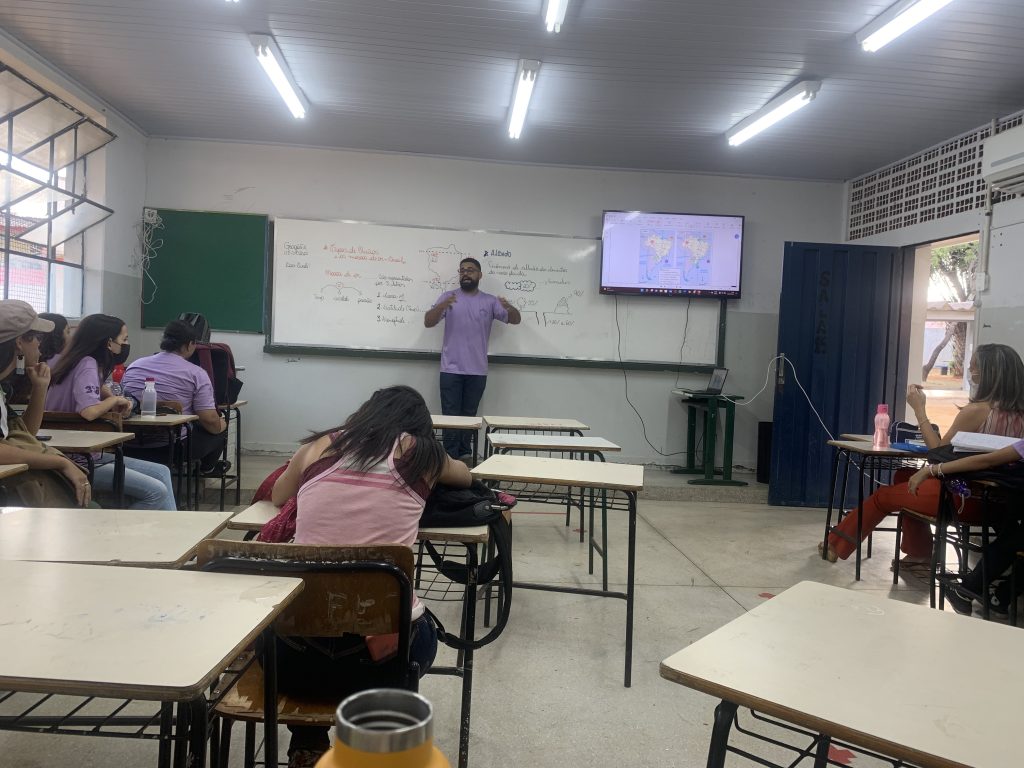
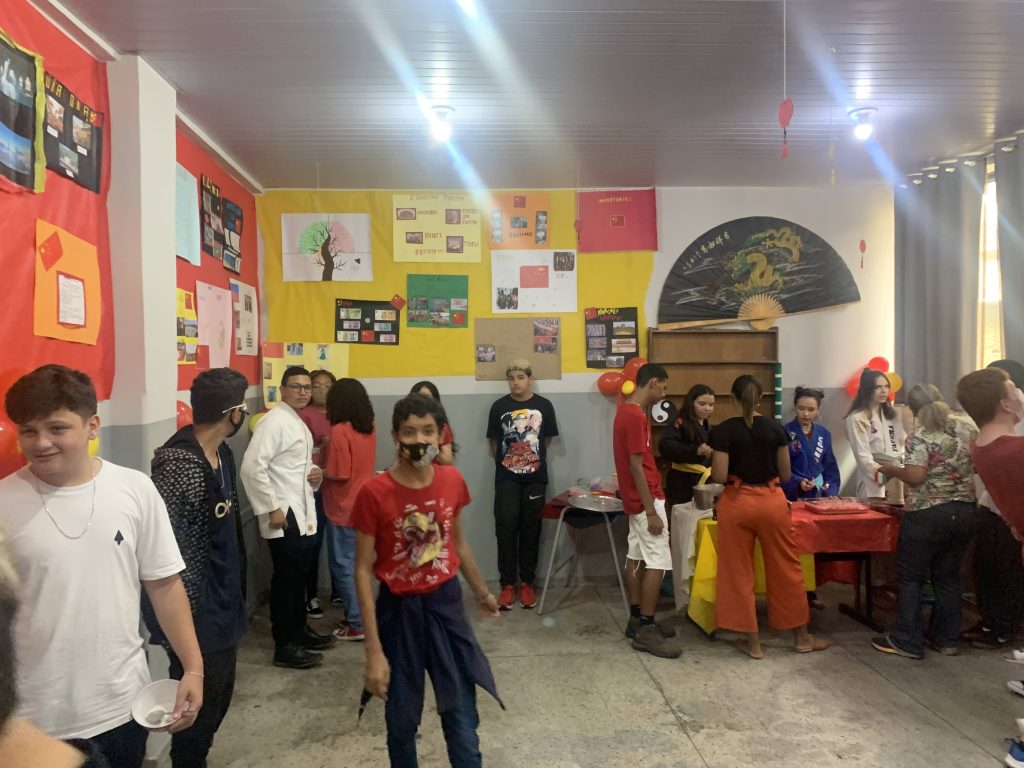
The lack of technology within the classroom does not seem to be a major hinderance in day to day learning for the students here. They have expectations that are not very different from what was expected of me in elementary and junior high, before technology was easily available in my schools. Students are expected to take notes, work on assignemnts together, and complete larger projects like the one mentioned above. Classroom ettiquete, on the other hand, is quite a bit different than what I am used to in Canada. Students here are much more lively during their lessons. While this means that enthusiasm and energy levels are higher, it is not always directed towards the teacher or to educational content. When teaching lessons, I have noticed it is uncommon for students to raise their hands to answer questions, as opposed to just shouting out answers. This is a double edged sword, since it makes students who are not as outgoing feel less inclined to participate, while also increasing the liklihood of the class falling off topic.
Regardless of what the school looks like, the students we have interacted with have been amazingly welcoming! The enthusiasm I have seen reminds me that schools are more than a place to learn – they are safe spaces where students can express themselves and form meaningful relationships. All of the schools I have seen here have been amazing examples of how these spaces can curate joy and excitment, and become a place that students want to return to every day.